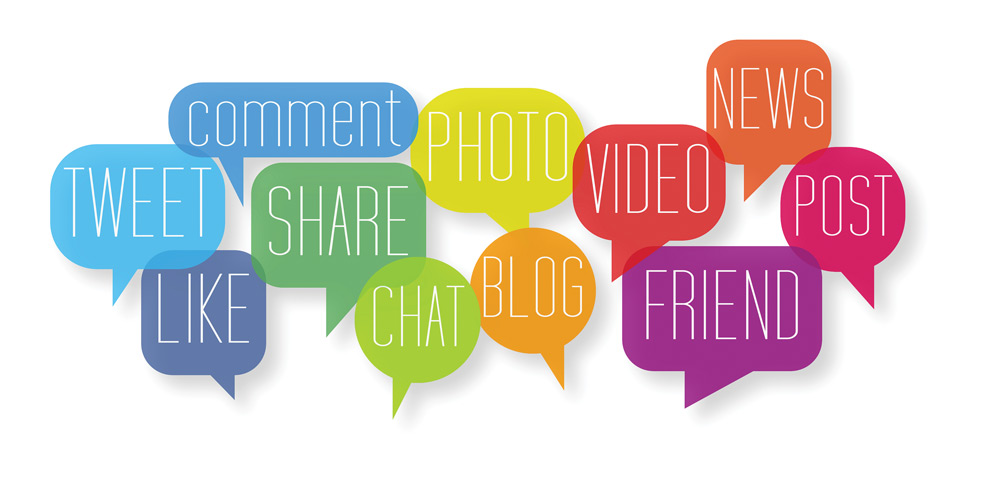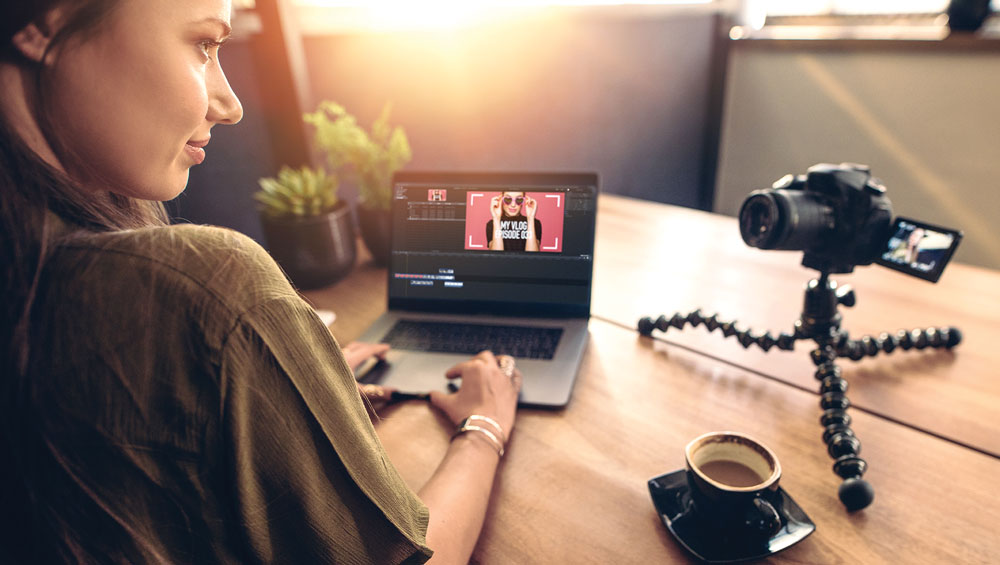By Aleja Seabron
 Small businesses continue to invest in social media. And they’re doing so with an average annual spend of $17,191 per year, according to Borrell Associates’ Local Marketing and Advertising Study for 2017. The changing nature of platforms such as Facebook and Instagram, as well as constant evolution and innovation, can make it challenging for business owners to maintain an effective social media strategy. It is essential that company leaders keep up with related trends to ensure their online presence remains relevant and successful. Here are a number of trends from the past year that have been effectively adopted by businesses, both small and large.
Small businesses continue to invest in social media. And they’re doing so with an average annual spend of $17,191 per year, according to Borrell Associates’ Local Marketing and Advertising Study for 2017. The changing nature of platforms such as Facebook and Instagram, as well as constant evolution and innovation, can make it challenging for business owners to maintain an effective social media strategy. It is essential that company leaders keep up with related trends to ensure their online presence remains relevant and successful. Here are a number of trends from the past year that have been effectively adopted by businesses, both small and large.
Live video
In 2017, live video was the “it" function across many social media platforms, and this year, audiences will continue to be fascinated with this raw, unpolished content in 2018. The majority of companies who used live video last year saw great returns and got some much-needed confidence to start experimenting with other forms of video content.
 Companies give two primary reasons for avoiding live video: Either they are unsure of the right content to use or their perfectionism is holding them back. In 2017, about 80 percent of consumers said they would rather watch a live video from a brand than read a blog post, and 82 percent said they prefer live video to written social media updates. This is no longer a cool new way to interact with audiences: It’s an expectation for your brand.
Companies give two primary reasons for avoiding live video: Either they are unsure of the right content to use or their perfectionism is holding them back. In 2017, about 80 percent of consumers said they would rather watch a live video from a brand than read a blog post, and 82 percent said they prefer live video to written social media updates. This is no longer a cool new way to interact with audiences: It’s an expectation for your brand.
Some live videos are just a few minutes, while others last for days. There is no right or wrong way to post a live video. Users watch them because they are raw and authentic. Add live videos to your content rotation. Test as you go, and adjust for your audience. Check out live video group hangouts, which were made popular in 2017 by the video hangout platform Houseparty.
Ephemeral content
Ephemeral content is disappearing visual content, a niche popularized by Snapchat. This year, Snapchat will be overhauling its app’s design to make it easier to navigate, but Instagram and Facebook are still your best bet for ephemeral content for several reasons. Every time users add to their stories on these platforms, their friends get an alert. Daily viewers of Instagram’s Stories surpassed daily Snapchat viewers just one year after launch, and the growth isn’t stopping—which means these features may not be free forever. Use them while you can! Instagram accounts with more than 10,000 followers can now add a link within their posts, which multiplies buying or inquiry opportunities. Most importantly, Facebook and Instagram provide metrics so you can analyze what’s working, while Snapchat does not.
Micro-influencers
In the past year, there seems to have been no shortage of social media stars. Generation Z, generally accepted as the people born after the year 2000, have grown up in the digital age and now use social media to make purchasing decisions.
In 2018, take a chance on yourself and become an influencer. Sponsor and attend events, donate to noteworthy charities, contribute to publications, stay active on social media, and align yourself with the who’s who in your industry. Make 2018 the year to know and be known.
Paid advertising
Paid social media advertising was once something companies did just to get an extra boost: Now you have to pay to play. In 2018, accept that this will not change and respond to it by learning how to target your audience properly through testing and consistency so your ad dollars won’t go to waste. Common pitfalls include paying too much for marketing campaigns, not running a campaign long enough to resonate with the public, and targeting the wrong audience (meaning that your fans won’t become customers).
Social messaging
If you have a smartphone, you have a basic messenger app that came preinstalled that allows you to text. Social messaging apps like Whatsapp, Facebook Messenger, and WeChat offer more features: social networks, security features, and free calling and texting.
2017 was an exciting year for messaging apps. Messenger now encrypts messages like Whatsapp does. Some messenger apps include ephemeral content, money sending/receiving capabilities, and full integration with your phone.
Business owners should consider using messenger apps as they become more advanced—you’re already texting your passengers about their travel plans. Artificial intelligence, voice assistants, and chatbots will change messenger apps as we have come to know them throughout 2018 and beyond.
Social media e-commerce
As signs say that purchasing pages will remain strong in 2018 and in the future. We’ve probably all heard about “landing pages:" pages created for specific campaigns, products, or services. These can be either pages on your website or pages created as a starting point in a sales funnel. With Facebook now allowing users to send and receive payments via their messenger app, be on the lookout for companies to explore this option more this year.
Augmented reality
 Augmented reality (AR) devices were all the rage in 2017, and virtual reality headsets were sought-after gifts. Currently mainly utilized in the gaming industry, AR will have an impact on social media in the near future. Snapchat, for example, already allows users to create dancing avatars. Businesses are now using this new tool to allow users to make purchase decisions. Thinking about buying that couch you’ve been eyeing but aren’t sure if it will go with your current décor? Use a virtual reality app to see what it will look like in your living room. The possibilities are endless: just imagine being able to give potential clients a “tour" of your vehicles and facility.
Augmented reality (AR) devices were all the rage in 2017, and virtual reality headsets were sought-after gifts. Currently mainly utilized in the gaming industry, AR will have an impact on social media in the near future. Snapchat, for example, already allows users to create dancing avatars. Businesses are now using this new tool to allow users to make purchase decisions. Thinking about buying that couch you’ve been eyeing but aren’t sure if it will go with your current décor? Use a virtual reality app to see what it will look like in your living room. The possibilities are endless: just imagine being able to give potential clients a “tour" of your vehicles and facility.
Facebook owns Oculus, a virtual reality hardware and software company, and has been working on a project slated to launch in 2018 called Spaces, which would allow friends to connect in Virtual Reality.
Investing in social media is a smart choice for your business. Be aware of the trends and don’t be afraid to ask for help in this changing advertising landscape. [CD0318]
Aleja Seabron is the social media manager for the LMC Group. She can be reached at aleja@lmc.group.
 Small businesses continue to invest in social media. And they’re doing so with an average annual spend of $17,191 per year, according to Borrell Associates’ Local Marketing and Advertising Study for 2017. The changing nature of platforms such as Facebook and Instagram, as well as constant evolution and innovation, can make it challenging for business owners to maintain an effective social media strategy. It is essential that company leaders keep up with related trends to ensure their online presence remains relevant and successful. Here are a number of trends from the past year that have been effectively adopted by businesses, both small and large.
Small businesses continue to invest in social media. And they’re doing so with an average annual spend of $17,191 per year, according to Borrell Associates’ Local Marketing and Advertising Study for 2017. The changing nature of platforms such as Facebook and Instagram, as well as constant evolution and innovation, can make it challenging for business owners to maintain an effective social media strategy. It is essential that company leaders keep up with related trends to ensure their online presence remains relevant and successful. Here are a number of trends from the past year that have been effectively adopted by businesses, both small and large. Live video
In 2017, live video was the “it" function across many social media platforms, and this year, audiences will continue to be fascinated with this raw, unpolished content in 2018. The majority of companies who used live video last year saw great returns and got some much-needed confidence to start experimenting with other forms of video content.
 Companies give two primary reasons for avoiding live video: Either they are unsure of the right content to use or their perfectionism is holding them back. In 2017, about 80 percent of consumers said they would rather watch a live video from a brand than read a blog post, and 82 percent said they prefer live video to written social media updates. This is no longer a cool new way to interact with audiences: It’s an expectation for your brand.
Companies give two primary reasons for avoiding live video: Either they are unsure of the right content to use or their perfectionism is holding them back. In 2017, about 80 percent of consumers said they would rather watch a live video from a brand than read a blog post, and 82 percent said they prefer live video to written social media updates. This is no longer a cool new way to interact with audiences: It’s an expectation for your brand. Some live videos are just a few minutes, while others last for days. There is no right or wrong way to post a live video. Users watch them because they are raw and authentic. Add live videos to your content rotation. Test as you go, and adjust for your audience. Check out live video group hangouts, which were made popular in 2017 by the video hangout platform Houseparty.
Ephemeral content
Ephemeral content is disappearing visual content, a niche popularized by Snapchat. This year, Snapchat will be overhauling its app’s design to make it easier to navigate, but Instagram and Facebook are still your best bet for ephemeral content for several reasons. Every time users add to their stories on these platforms, their friends get an alert. Daily viewers of Instagram’s Stories surpassed daily Snapchat viewers just one year after launch, and the growth isn’t stopping—which means these features may not be free forever. Use them while you can! Instagram accounts with more than 10,000 followers can now add a link within their posts, which multiplies buying or inquiry opportunities. Most importantly, Facebook and Instagram provide metrics so you can analyze what’s working, while Snapchat does not.
Micro-influencers
In the past year, there seems to have been no shortage of social media stars. Generation Z, generally accepted as the people born after the year 2000, have grown up in the digital age and now use social media to make purchasing decisions.
“Companies give two primary reasons for avoiding live video: Either they are unsure of the right content to use or their perfectionism is holding them back.”RetailDive had this to say about Generation Z and the associated social media trends: “Gen Z is two-to-three times more likely to be influenced by social media than by sales or discounts—the only generation to value social media over price when it comes to making purchase decisions...."
In 2018, take a chance on yourself and become an influencer. Sponsor and attend events, donate to noteworthy charities, contribute to publications, stay active on social media, and align yourself with the who’s who in your industry. Make 2018 the year to know and be known.
Paid advertising
Paid social media advertising was once something companies did just to get an extra boost: Now you have to pay to play. In 2018, accept that this will not change and respond to it by learning how to target your audience properly through testing and consistency so your ad dollars won’t go to waste. Common pitfalls include paying too much for marketing campaigns, not running a campaign long enough to resonate with the public, and targeting the wrong audience (meaning that your fans won’t become customers).
Social messaging
If you have a smartphone, you have a basic messenger app that came preinstalled that allows you to text. Social messaging apps like Whatsapp, Facebook Messenger, and WeChat offer more features: social networks, security features, and free calling and texting.
2017 was an exciting year for messaging apps. Messenger now encrypts messages like Whatsapp does. Some messenger apps include ephemeral content, money sending/receiving capabilities, and full integration with your phone.
Business owners should consider using messenger apps as they become more advanced—you’re already texting your passengers about their travel plans. Artificial intelligence, voice assistants, and chatbots will change messenger apps as we have come to know them throughout 2018 and beyond.
Social media e-commerce
As signs say that purchasing pages will remain strong in 2018 and in the future. We’ve probably all heard about “landing pages:" pages created for specific campaigns, products, or services. These can be either pages on your website or pages created as a starting point in a sales funnel. With Facebook now allowing users to send and receive payments via their messenger app, be on the lookout for companies to explore this option more this year.
Augmented reality
 Augmented reality (AR) devices were all the rage in 2017, and virtual reality headsets were sought-after gifts. Currently mainly utilized in the gaming industry, AR will have an impact on social media in the near future. Snapchat, for example, already allows users to create dancing avatars. Businesses are now using this new tool to allow users to make purchase decisions. Thinking about buying that couch you’ve been eyeing but aren’t sure if it will go with your current décor? Use a virtual reality app to see what it will look like in your living room. The possibilities are endless: just imagine being able to give potential clients a “tour" of your vehicles and facility.
Augmented reality (AR) devices were all the rage in 2017, and virtual reality headsets were sought-after gifts. Currently mainly utilized in the gaming industry, AR will have an impact on social media in the near future. Snapchat, for example, already allows users to create dancing avatars. Businesses are now using this new tool to allow users to make purchase decisions. Thinking about buying that couch you’ve been eyeing but aren’t sure if it will go with your current décor? Use a virtual reality app to see what it will look like in your living room. The possibilities are endless: just imagine being able to give potential clients a “tour" of your vehicles and facility. Facebook owns Oculus, a virtual reality hardware and software company, and has been working on a project slated to launch in 2018 called Spaces, which would allow friends to connect in Virtual Reality.
Investing in social media is a smart choice for your business. Be aware of the trends and don’t be afraid to ask for help in this changing advertising landscape. [CD0318]
Aleja Seabron is the social media manager for the LMC Group. She can be reached at aleja@lmc.group.

